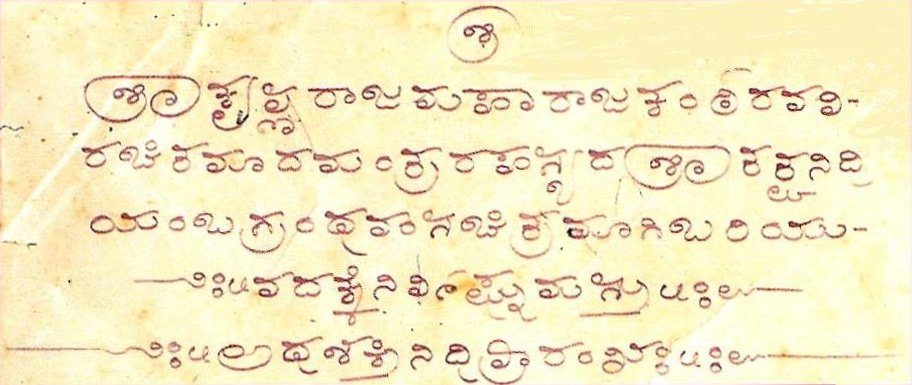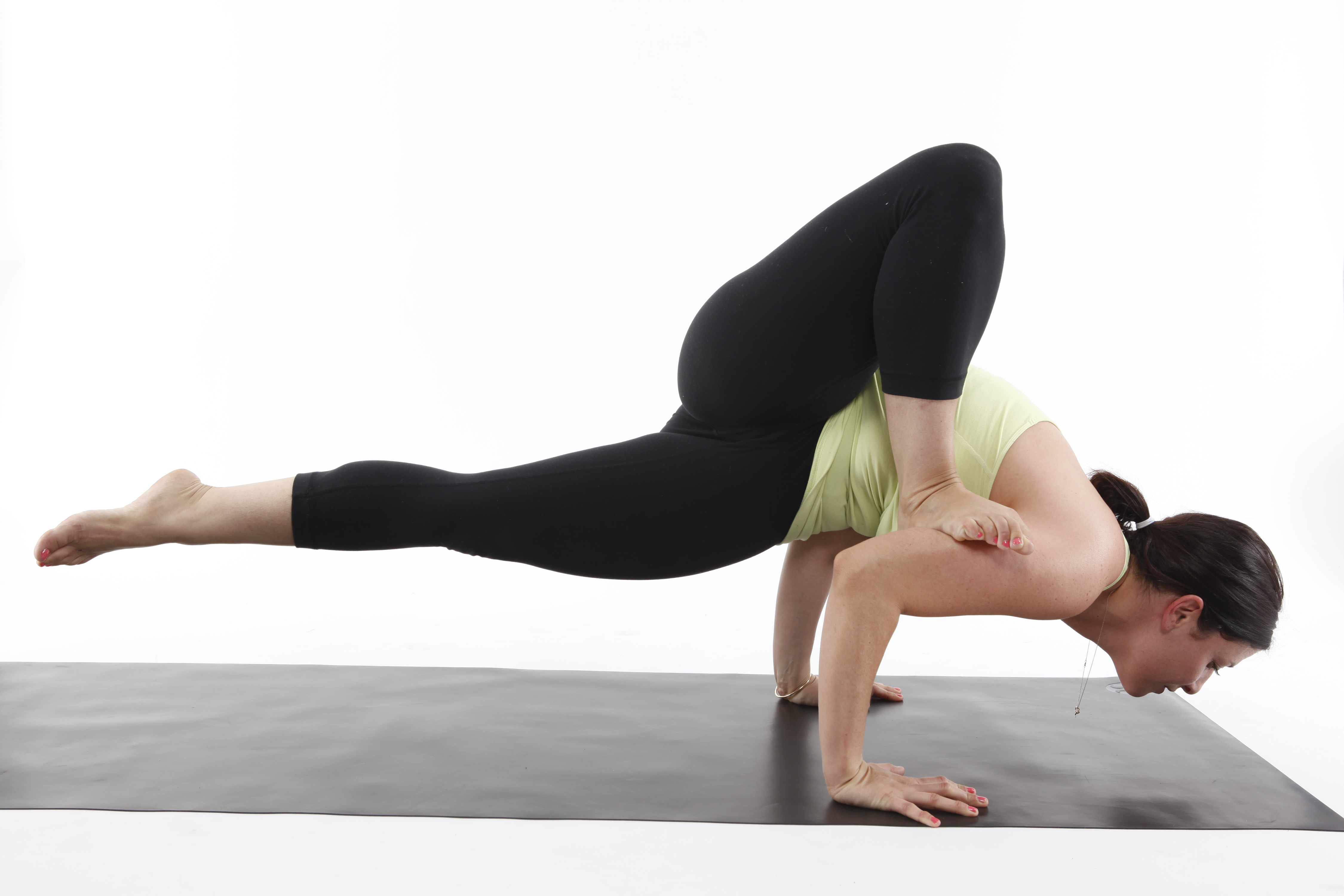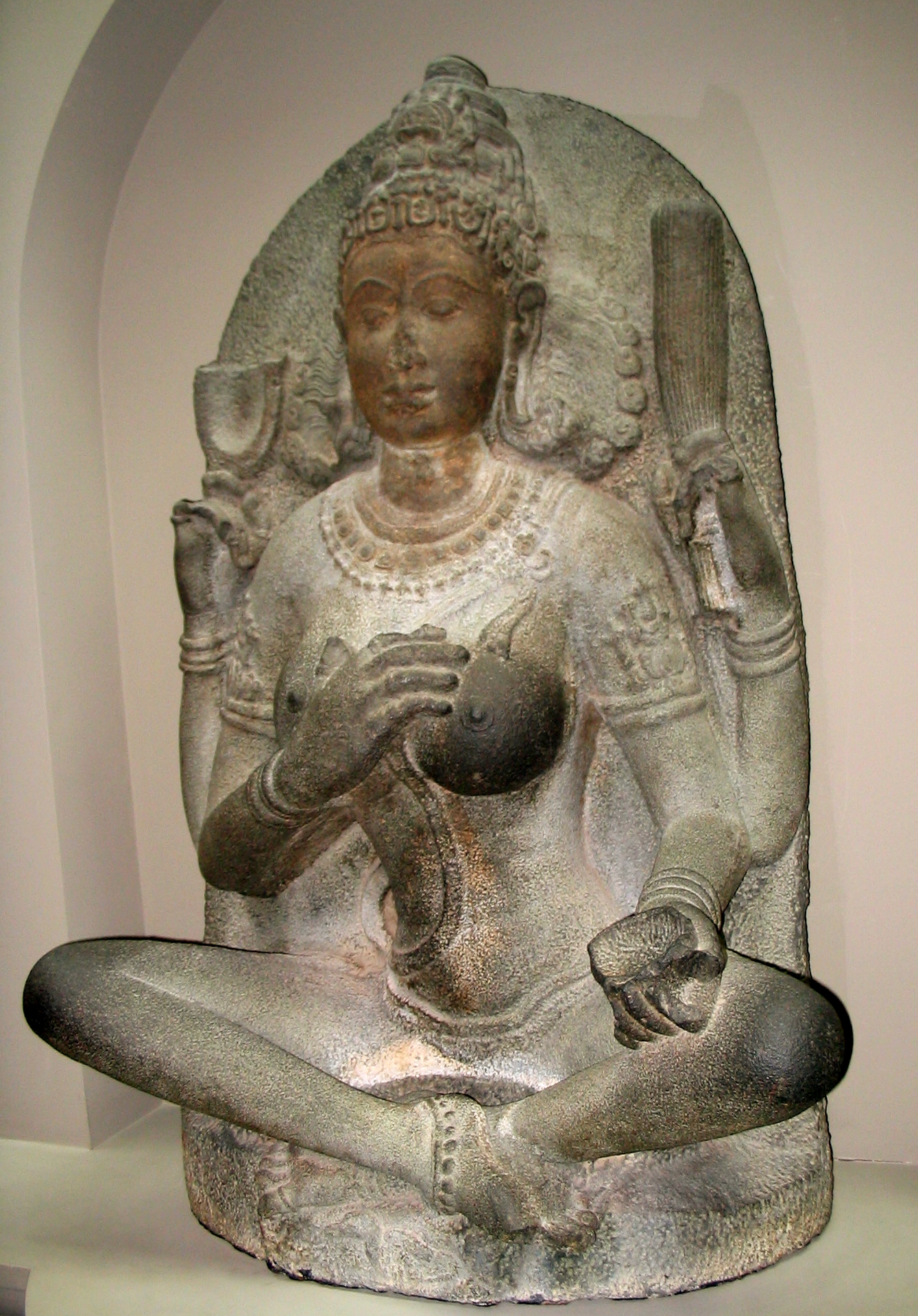|
Sritattvanidhi
The ''Sritattvanidhi'' (, "The Illustrious Treasure of Realities") is a treatise written in the 19th century in Karnataka on the iconography and iconometry of divine figures in South India. One of its sections includes instructions for, and illustrations of, 122 hatha yoga postures. Authorship The ''Sritattvanidhi'' is attributed to the then Maharaja of Mysore, Krishnaraja Wodeyar III (b. 1794 - d. 1868). The Maharaja was a great patron of art and learning, and was himself a scholar and writer. Around 50 works are ascribed to him. The first page of the ''Sritattvanidhi'' attributes authorship of the work to the Maharaja himself: {{quote, ''May the work Sri Tattvanidi, which is illustrated and contains secrets of mantras and which is authored by King Sri Krishna Raja Kamteerava, be written without any obstacle. Beginning of Shaktinidhi.''{{sfn, Wodeyar, 1997, loc=Shakti nidhi Martin-Dubost's review of the history of this work says that the Maharaja funded an effort to put tog ... [...More Info...] [...Related Items...] OR: [Wikipedia] [Google] [Baidu] |
Krishnamacharya
Tirumalai Krishnamacharya (18 November 1888 – 28 February 1989) was an Indian yoga teacher, ayurvedic healer and scholar. He is seen as one of the most important gurus of modern yoga, and is often called "the father of modern yoga" for his wide influence on the development of postural yoga. Like earlier pioneers influenced by physical culture such as Yogendra and Kuvalayananda, he contributed to the revival of hatha yoga. Krishnamacharya held degrees in all the six Vedic ''darśanas'', or Indian philosophies. While under the patronage of the King of Mysore, Krishna Raja Wadiyar IV, Krishnamacharya traveled around India giving lectures and demonstrations to promote yoga, including such feats as apparently stopping his heartbeat. He is widely considered as the architect of ''vinyāsa'', in the sense of combining breathing with movement; the style of yoga he created has come to be called Viniyoga or Vinyasa Krama Yoga. Underlying all of Krishnamacharya's teachings was the ... [...More Info...] [...Related Items...] OR: [Wikipedia] [Google] [Baidu] |
Norman Sjoman
Norman E. Sjoman (born July 6, 1944, Mission City) is known as author of the 1996 book ''The Yoga Tradition of the Mysore Palace'', which contains an English translation of the yoga section of ''Sritattvanidhi'', a 19th-century treatise by the Maharaja of Mysore, Krishnaraja Wodeyar III (b. 1794 - d. 1868). This book contributes an original view on the history and development of the teaching traditions behind modern asanas. According to Sjoman, a majority of the tradition of teaching yoga as exercise, spread primarily through the teachings of B. K. S. Iyengar and his students, "appears to be distinct from the philosophical or textual tradition f hatha yoga">hatha_yoga.html" ;"title="f hatha yoga">f hatha yoga and does not appear to have any basis as a [genuine] tradition as there is no textual support for the asanas taught and no lineage of teachers." Education Sjoman studied at the University of British Columbia and Stockholm University before obtaining a PhD from th ... [...More Info...] [...Related Items...] OR: [Wikipedia] [Google] [Baidu] |
Kingdom Of Mysore
The Kingdom of Mysore was a realm in South India, southern India, traditionally believed to have been founded in 1399 in the vicinity of the modern city of Mysore. From 1799 until 1950, it was a princely state, until 1947 in a subsidiary alliance with Presidencies and provinces of British India, British India. The British took Direct Control over the Princely state, Princely State in 1831.Rajakaryaprasakta Rao Bahadur (1936), p383 It then became Mysore State (later enlarged and renamed to Karnataka) with its ruler remaining as Rajapramukh until 1956, when he became the first Governor of the reformed state. The kingdom, which was founded and ruled for most part by the Hindu Wodeyar family, initially served as feudatories under the Vijayanagara Empire. The 17th century saw a steady expansion of its territory and during the rule of Kanthirava Narasaraja I, Narasaraja Wodeyar I and Chikka Devaraja, Chikka Devaraja Wodeyar, the kingdom annexed large expanses of what is now southern ... [...More Info...] [...Related Items...] OR: [Wikipedia] [Google] [Baidu] |
Ganesha
Ganesha ( sa, गणेश, ), also known as Ganapati, Vinayaka, and Pillaiyar, is one of the best-known and most worshipped deities in the Hindu pantheon and is the Supreme God in Ganapatya sect. His image is found throughout India. Hindu denominations worship him regardless of affiliations. Devotion to Ganesha is widely diffused and extends to Jains and Buddhists and includes Nepal, Sri Lanka, Thailand, Indonesia (Java and Bali), Singapore, Malaysia, Philippines, and Bangladesh and in countries with large ethnic Indian populations including Fiji, Guyana, Mauritius, and Trinidad and Tobago. Although Ganesha has many attributes, he is readily identified by his elephant head. He is widely revered, more specifically, as the remover of obstacles and thought to bring good luck; the patron of arts and sciences; and the deva of intellect and wisdom. As the god of beginnings, he is honoured at the start of rites and ceremonies. Ganesha is also invoked as a patron of letters ... [...More Info...] [...Related Items...] OR: [Wikipedia] [Google] [Baidu] |
Haṭhābhyāsapaddhati
The ''Haṭhābhyāsapaddhati'' ("Manual on the practice of Haṭha yoga") is a manual of Haṭha yoga written in Sanskrit in the 18th century, attributed to Kapāla Kuraṇṭaka; it is the only known work before modern yoga to describe elaborate sequences of asanas and survives in a single manuscript. It includes unusual elements such as rope poses. Manuscript The ''Haṭhābhyāsapaddhati'' is an 18th-century manuscript, written by Kapāla Kurantaka, that describes elaborate sequences of asanas in Haṭha yoga, including many that are not practised today. Its name means "Manual on the practice of Haṭha yoga". It was written before the British Raj and well before the advent of modern yoga, but it appears to have been influenced by the physical culture of the period in India, including the practice of martial arts. It is arranged in six groups and includes asanas such as Gajāsana, elephant pose, which demand repeated movements, in the case of Gajāsana repetitions of Adho Muk ... [...More Info...] [...Related Items...] OR: [Wikipedia] [Google] [Baidu] |
Krishnaraja Wodeyar III
Krishnaraja Wadiyar III (14 July 1794 – 27 March 1868) was the twenty-second maharaja of the Kingdom of Mysore. Also known as Mummadi Krishnaraja Wadiyar, the maharaja belonged to the Wadiyar dynasty and ruled the kingdom for nearly seventy years, from 30 June 1799 to 27 March 1868. He is known for his contribution and patronage to different arts and music during his reign. He was succeeded by his adopted son, Chamarajendra Wadiyar X. Early years Krishnaraja Wadiyar III, who was born at Srirangapatna, was the son of Khasa Chamaraja Wadiyar IX (who was born at Arikottara, now Chamarajanagar) and his first wife, Maharani Kempananjammani Avaru.Annals of The Mysore Royal Family Part-1: A publication by the Royal Family of Mysore: 1916 Maharani Lakshmi Ammani Devi, his adoptive grandmother, played a major role in the education and upbringing of her adopted grandson, Krishnaraja Wadiyar III, and was instrumental in his ascendancy to the Mysore throne.Rajakaryaprasakta Rao Bahadur ( ... [...More Info...] [...Related Items...] OR: [Wikipedia] [Google] [Baidu] |
James Mallinson (author)
Sir James Mallinson, 5th Baronet of Walthamstow (born 22 April 1970) is a British Indologist, writer and translator. He is recognised as one of the world's leading experts on the history of medieval Hatha Yoga. Early life Mallinson became interested in India by reading Rudyard Kipling's novel ''Kim'' as a teenager; the book describes an English boy travelling India with a holy man. He was educated at Eton College and the University of Oxford, where he read Sanskrit and Old Iranian for his bachelor's degree, and studied the ethnography of South Asia for his master's degree at SOAS University of London. Mallinson is described as "perhaps the only baronet to wear dreadlocks"; he let his hair grow out from 1988 on his first visit to India during his gap year. He cut his hair in 2019 after the death of his guru, Mahant Balyogi Sri Ram Balak Das, who had initiated him into the Ramanandi Sampradaya at the Ujjain Kumbh Mela in 1992. Supervised by Alexis Sanderson, his doctoral thesis at ... [...More Info...] [...Related Items...] OR: [Wikipedia] [Google] [Baidu] |
Yoga Journal
''Yoga Journal'' is a website and digital journal, formerly a print magazine, on yoga as exercise founded in California in 1975 with the goal of combining the essence of traditional yoga with scientific understanding. It has produced live events and materials such as DVDs on yoga and related subjects. The magazine grew from the California Yoga Teachers Association's newsletter, which was called ''The Word''. ''Yoga Journal'' has repeatedly won Western Publications Association's Maggie Awards for "Best Health and Fitness Magazine". It has however been criticized for representing yoga as being intended for affluent white women; in 2019 it attempted to remedy this by choosing a wider variety of yoga models. Beginnings ''Yoga Journal'' was started in May 1975 by the California Yoga Teachers Association (CYTA), with Rama Jyoti Vernon as President, William Staniger as the founding editor, and Judith Lasater on the board and serving as copy editor. Their goal was to combine "the ess ... [...More Info...] [...Related Items...] OR: [Wikipedia] [Google] [Baidu] |
Yoga As Exercise
Yoga as exercise is a physical activity consisting mainly of postures, often connected by flowing sequences, sometimes accompanied by breathing exercises, and frequently ending with relaxation lying down or meditation. Yoga in this form has become familiar across the world, especially in America and Europe. It is derived from medieval Haṭha yoga, which made use of similar postures, but it is generally simply called "yoga". Academics have given yoga as exercise a variety of names, including modern postural yoga and transnational anglophone yoga. Posture is described in the ''Yoga Sutras'' II.29 as the third of the eight limbs, the ashtanga, of yoga. Sutra II.46 defines it as that which is ''steady and comfortable'', but no further elaboration or list of postures is given. Postures were not central in any of the older traditions of yoga; posture practice was revived in the 1920s by yoga gurus including Yogendra and Kuvalayananda, who emphasised its health benefits. The ... [...More Info...] [...Related Items...] OR: [Wikipedia] [Google] [Baidu] |
Agama (Hinduism)
The Agamas (Devanagari: , IAST: ) are a collection of several Tantric literature and scriptures of Hindu schools.Julius Lipner (2004), Hinduism: the way of the banyan, in The Hindu World (Editors: Sushil Mittal and Gene Thursby), Routledge, , pages 27–28 The term literally means tradition or "that which has come down", and the Agama texts describe cosmology, epistemology, philosophical doctrines, precepts on meditation and practices, four kinds of yoga, mantras, temple construction, deity worship and ways to attain sixfold desires. These canonical texts are in Tamil and Sanskrit. Agamas were predominant in South India but Sanskritized later. The three main branches of Agama texts are Shaiva, Vaishnava, and Shakta. The Agamic traditions are sometimes called Tantrism, although the term "Tantra" is usually used specifically to refer to Shakta Agamas.Mariasusai Dhavamony (1999), Hindu Spirituality, Gregorian University and Biblical Press, , pages 31–34 with footnotes The Agama li ... [...More Info...] [...Related Items...] OR: [Wikipedia] [Google] [Baidu] |
Loincloth
A loincloth is a one-piece garment, either wrapped around itself or kept in place by a belt. It covers the genitals and, at least partially, the buttocks. Loincloths which are held up by belts or strings are specifically known as breechcloth or breechclout.U.S. National Park Service Retrieved on 2009-12-22. . Retrieved on 2009-12-22. Often, the flaps hang down in front and back. History and types Loincloths are worn in societies where no other clothing is needed or wanted. Loincloths are commonly used as an |
Yogini
A yogini (Sanskrit: योगिनी, IAST: ) is a female master practitioner of tantra and yoga, as well as a formal term of respect for female Hindu or Buddhist spiritual teachers in Indian subcontinent, Southeast Asia and Greater Tibet. The term is the feminine Sanskrit word of the masculine ''yogi'', while the term "yogin" is used in neutral, masculine or feminine sense. A yogini, in some contexts, is the sacred feminine force made incarnate, as an aspect of Parvati, and revered in the yogini temples of India as the Sixty-four Yoginis. History The worship of yoginis began outside Vedic Religion, starting according to Vidya Dehejia with the cults of local village goddesses, the ''grama devatas''. Each one protects her village, sometimes giving specific benefits such as safety from the stings of scorpions. Gradually, through Tantra, these goddesses were grouped together into a number believed powerful, most often 64, and they became accepted as a valid part of Hinduism. ... [...More Info...] [...Related Items...] OR: [Wikipedia] [Google] [Baidu] |

_from_Sritattvanidhi.jpg)






